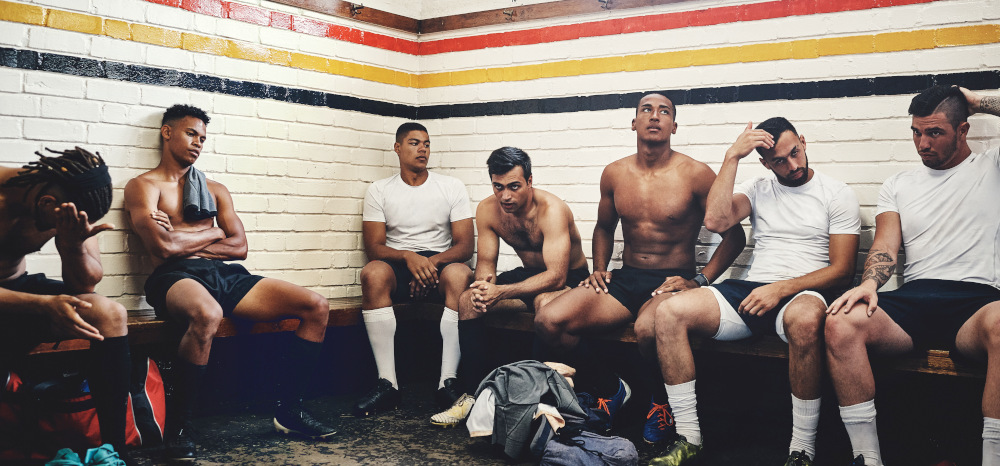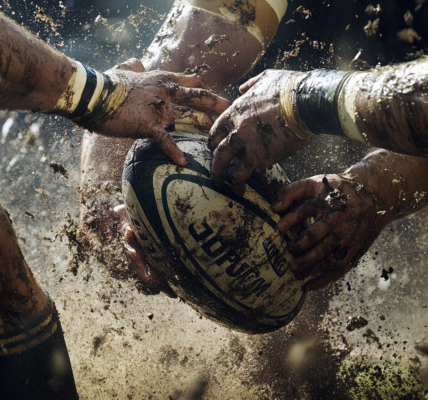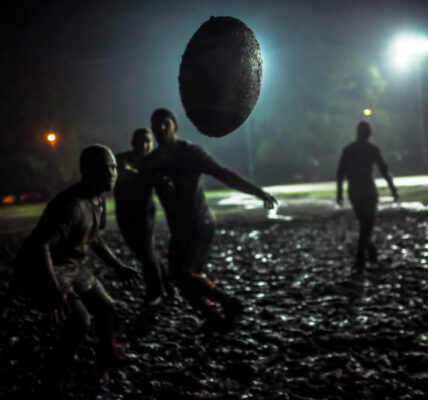Before the boots slam the turf. Before the whistle pierces the air. Before the anthem lifts the nation into collective breath, there’s tape. Wound tightly, not just for support, but for something older. Something quieter. Something that sits somewhere between belief and performance. The tape around the ankles isn’t just a precaution. It’s a prayer.
In South African rugby, rituals are not spoken of in the same way tactics are. There are no diagrams for why a player steps onto the field with the left foot first. No sports scientist can measure the magic of a pre-game handshake repeated since high school. And yet, every match is full of these moments, the tiny habits, superstitions, and sacred repetitions that form the invisible script of the game. It’s a kind of silent language, spoken in white tape, whispered in war paint, passed down like folklore in clubhouses and change rooms across the country. There’s a lock in Durban who ties his laces three times. Always three. Always left before right. Once, a teammate joked about swapping his boots as a prank. The player refused to train for a week. “That’s not a joke,” he said. “That’s messing with fate.”
Every player has something. A stretch. A song. A line they mumble under their breath before the ball leaves the tunnel. For some, it’s about grounding. For others, protection. But the effect is the same, these rituals create control in a game where so much is chaos. They are handholds in the climb toward kickoff. Some wrap tape for injury prevention. Others do it because their fathers did. Or their heroes. Or because, one time in U16s, they played the best match of their lives wearing tape just like that, and now, they’ll never go without it.
There are moments before a match that don’t show up on TV. Quiet ones. A fullback sitting in the corner of the locker room with eyes closed, mouthing a silent prayer. A prop humming a childhood lullaby as he loads his bag. A captain scribbling the same initials on his wrist before every match, someone lost, someone remembered. Superstition in rugby is not about show. It’s about symmetry. Feeling right. Getting back into that flow state where you’re not thinking, just doing. Just reacting. Just becoming.
The rituals extend onto the field. Some players slap their thighs before every scrum. Others pat their chest twice after a missed tackle. A wink to the sky after a try. A kiss to the hand before the penalty kick. Not performance, but communion.
The tape matters. Ask any player. It holds more than tendons, it holds memory. Each wrap becomes a layer of protection, not just for the body, but for belief. If it was worn during a win, it’s worn again. If it failed, it’s changed. It’s why some players pack their own tape instead of trusting the team physio. It’s why rituals are personal, even if they look the same from the stands.
The dressing room becomes a temple. Everyone getting ready in their own way, yet together. The clatter of studs on concrete, the hiss of spray, the soft ripping of tape. A kind of music. A preparation not just for contact, but for battle. Rugby players don’t wear helmets, but they wear rituals like armor.
Many of these rituals start young. In dusty school fields, where coaches are half tacticians, half priests. Where the old boys tell stories of that one winger who never trained with the team but scored every Saturday because he slept with his match socks under his pillow. No one really believes it. But no one dares to dismiss it either.
Some rituals are passed down. The tape job that an older brother showed you. The tunnel chant taught by a coach who hasn’t coached in 15 years but whose voice still echoes in your head before every kickoff. They live in muscle memory. In routine. In heartbeat.
 Even at the professional level, players carry childhood rituals forward. A world champion might still carry the coin his mother gave him before his first provincial trial. A seasoned flanker may still wear the same undershorts he’s worn since Varsity Cup, even if they’re patched more than fabric. What fans see is the action. The tackles, the passes, the brilliance. But beneath that is a sublayer, a silent choreography of habits and hexes.
Even at the professional level, players carry childhood rituals forward. A world champion might still carry the coin his mother gave him before his first provincial trial. A seasoned flanker may still wear the same undershorts he’s worn since Varsity Cup, even if they’re patched more than fabric. What fans see is the action. The tackles, the passes, the brilliance. But beneath that is a sublayer, a silent choreography of habits and hexes.
The winger who spits over his left shoulder before chasing a kick. The hooker who knocks on wood before entering a scrum. The fly-half who never passes during warm-ups unless it’s an odd number of times.
There’s a trust among players not to talk about it too much. Because to name the ritual is to risk breaking its spell. They don’t laugh at each other’s quirks. Not really. They know, next week, it could be them tying a red string around their wrist because they dreamed of fire the night before.
South Africa is a country of belief. In spirits. In ancestors. In energy. Rugby, despite its physicality, is not immune. If anything, it is soaked in it. You see it in the fans painting faces, in the players touching the badge, in the moment of silence that always falls before the haka, the anthem, the whistle.
Some say it’s just habit. Others say it’s spiritual. Maybe it’s both. What’s undeniable is that rituals matter, especially in a country where the game means more than sport. Where history, culture, pain, and pride all get stitched into the jersey along with the sponsor logos. In the chaos of 80 minutes, these rituals are the only constant. After the match, the tape comes off. Slowly. Carefully. Sometimes with a win clinging to it. Sometimes with loss. But always with reverence.
It’s discarded, but not disrespected. Because it did its job. It held the fear back. It gave the illusion of control. It said, “I’m ready.”
And when the boots are unlaced and the stadium empties, there’s always the next match. The next wrap. The next superstition to whisper to yourself while the national anthem plays and your heart pounds against your ribs.
Because even in a game of brute force, it’s often the unseen, the tape, the ritual, the silence, that carries the weight.




